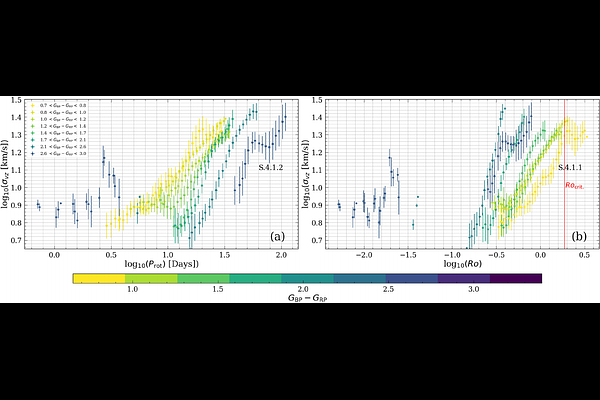Anchoring Stellar Age Indicators: A Cross-Calibration of [C/N] and Gyrochronology Ages via the Age-Velocity-Dispersion Relation

Anchoring Stellar Age Indicators: A Cross-Calibration of [C/N] and Gyrochronology Ages via the Age-Velocity-Dispersion Relation
Yuxi Lu, Marc H. Pinsonneault, Yuan-Sen Ting, Phil R. Van-Lane, John D Roberts, Jamie Tayar, Alexander Stone-Martinez
AbstractDetermining stellar ages is challenging, as it depends on other stellar parameters in a non-linear way and often relies on stellar evolution models to infer the underlying relation between these parameters and age. This complexity increases when comparing different age-dating methods, as they rely on distinct indicators and are often applicable to non-overlapping regions of the color-magnitude diagram. Moreover, many empirical calibration methods rely on pre-determined ages, often from open clusters or asteroseismology, which only cover a limited parameter space. Fortunately, the age-velocity-dispersion relation (AVR), in which the velocity dispersion increases with age, is a universal feature among stars of all evolutionary stages. In this paper, we 1) explore the parameter space in which [C/N] and gyrochronology are applicable, extending beyond the domains probed by asteroseismology and open clusters, and 2) assess whether the traditionally assumed [C/N] and gyrochronology relations yield ages on a consistent physical scale, after calibrating both using the same AVR. We find gyrochronology can be applied to all partially convective stars after they have converged onto the slow rotating sequence and before they experience weakened magnetic braking; [C/N] can be used to infer ages for all giants with metallicity > -0.8 dex and [C/N] < -0.05 dex, and can be used as an age-indicator down to [Fe/H] of -1 dex if only selecting the low-$\alpha$ disk. Lastly, ages obtained from [C/N] and gyrochronology agree within uncertainty after accounting for systematic offsets.